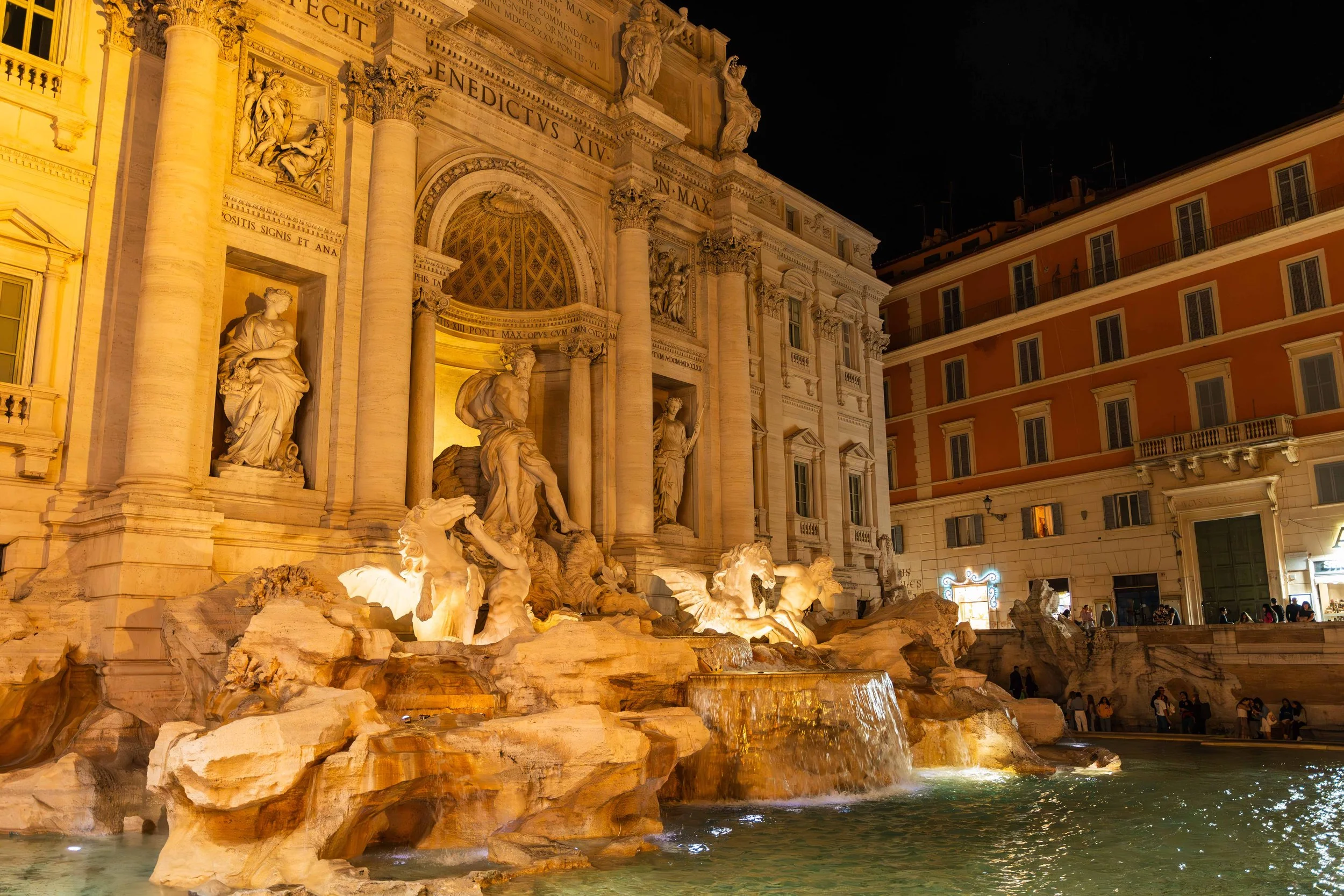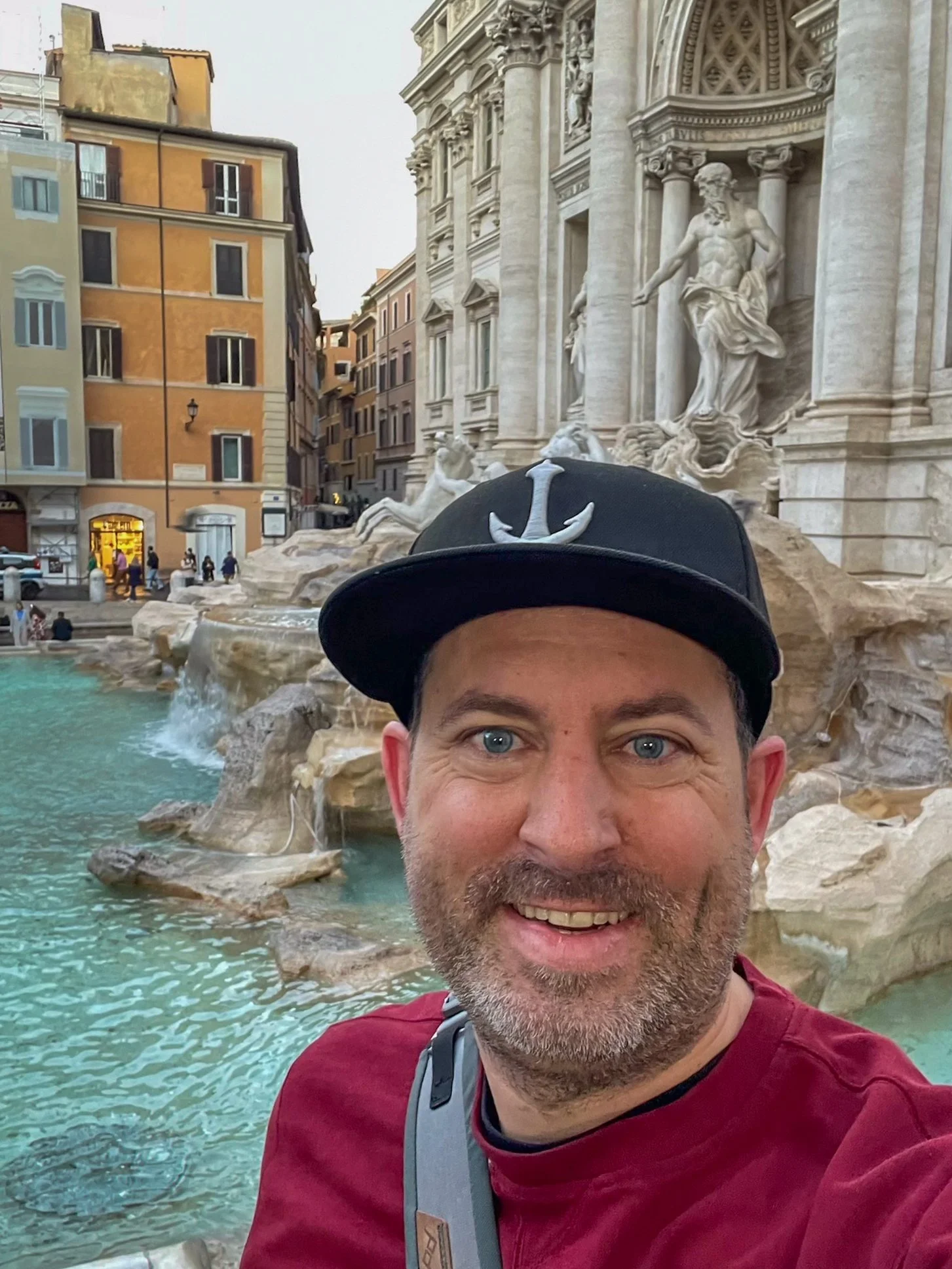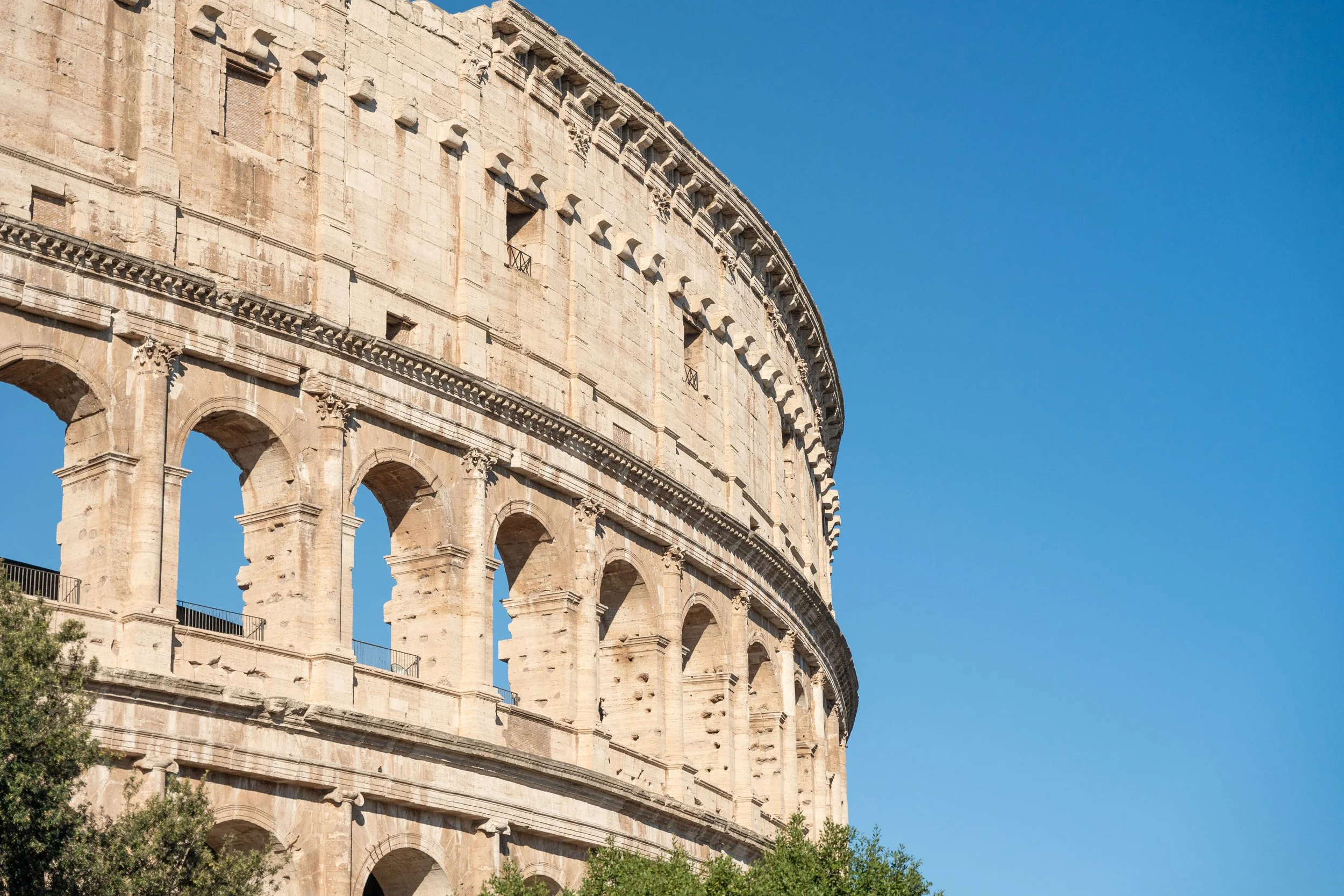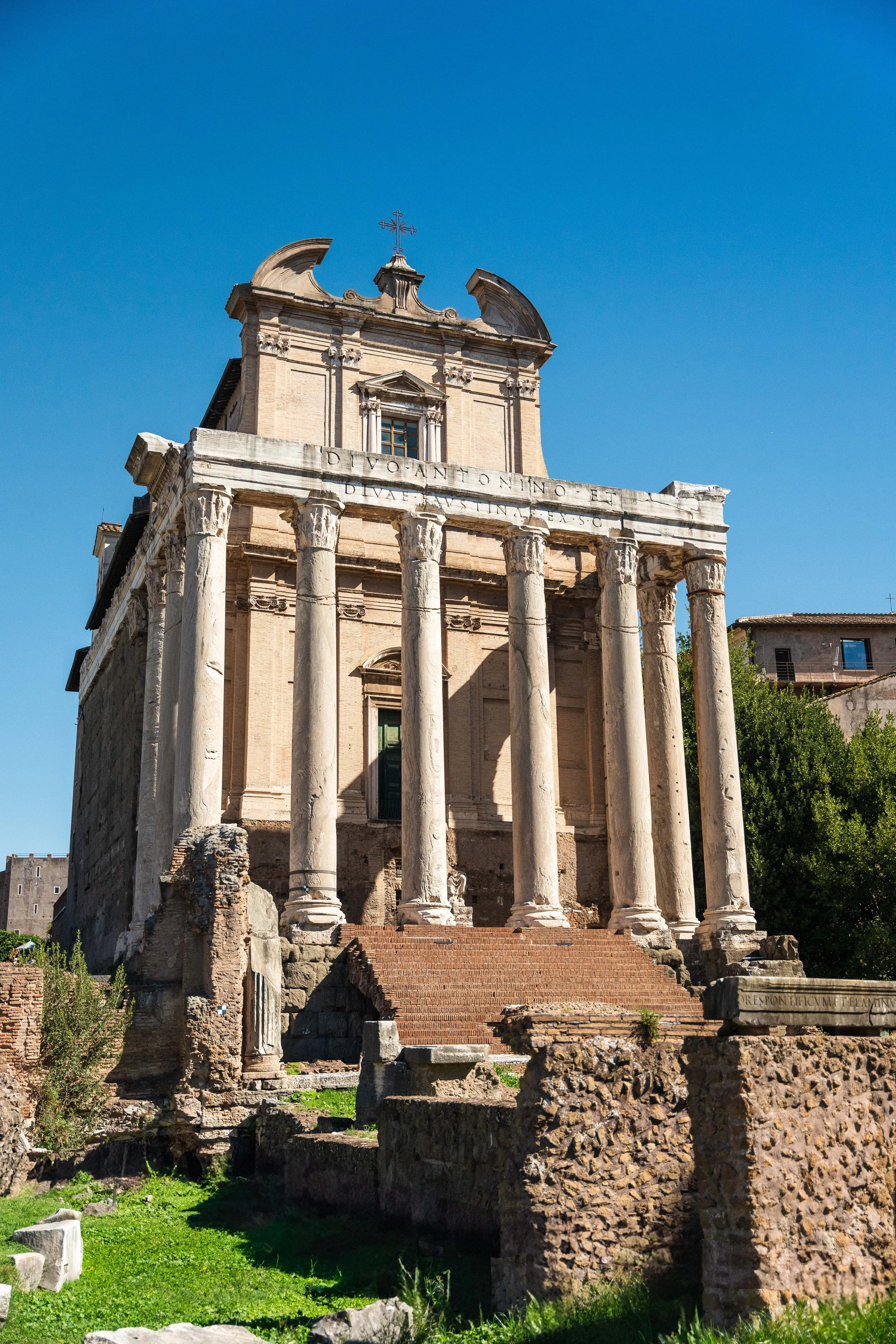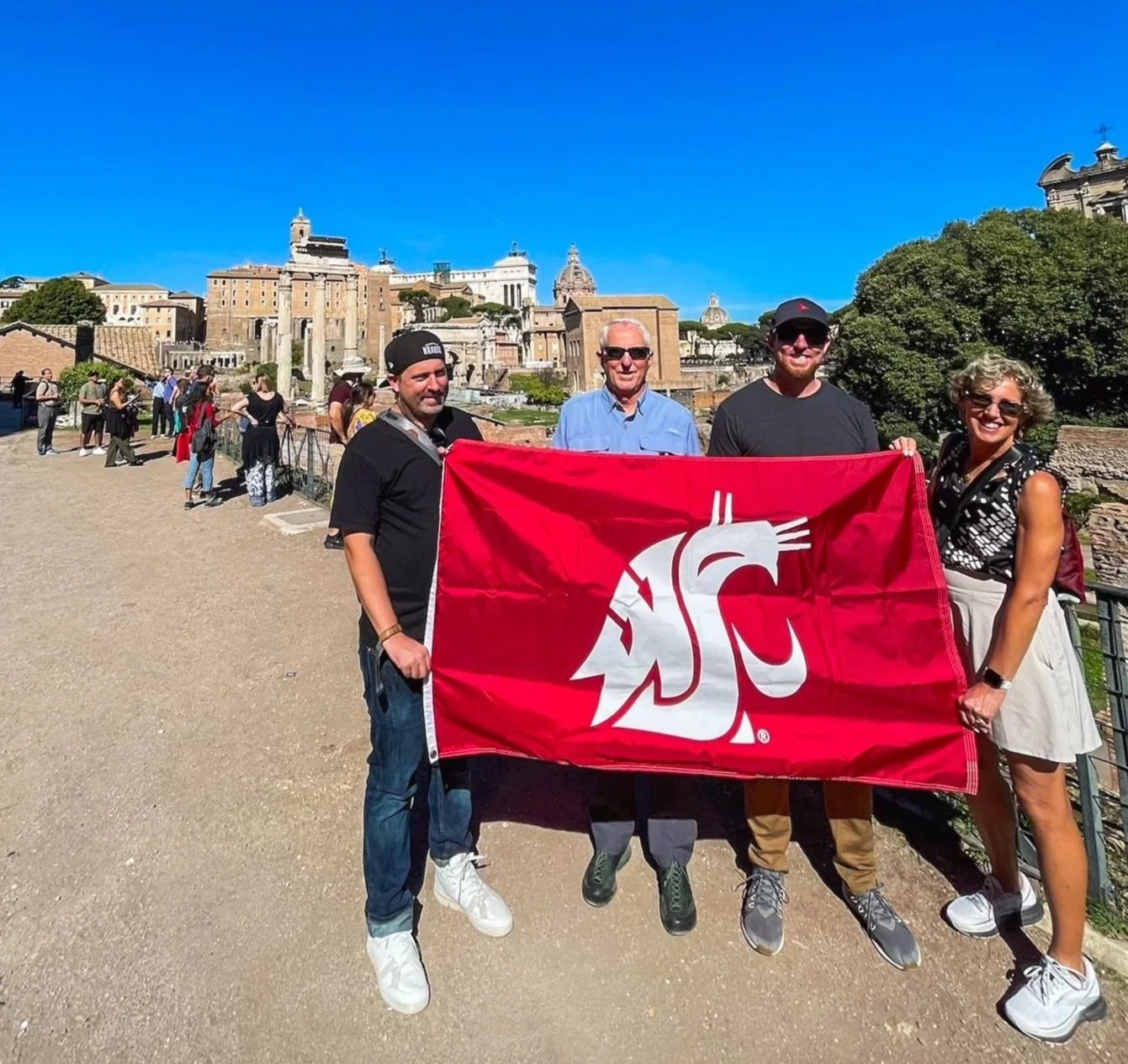Pre-trip: Rome - The Eternal City
After 37 grueling hours of travel, a delayed flight at LAX, and a missed connection at Heathrow, I finally touched down in Rome—a city that has shaped the world for over two millennia. What began as a humble village, nurtured—if legend is to be believed—by a she-wolf, grew into the beating heart of an empire that ruled from Britain to the Middle East. This was the city of Caesar, Augustus, and gladiators, later transforming into the spiritual epicenter of the Roman Catholic Church, home to the Vatican and the Papacy.
Today, Rome is a city of contradictions—ancient ruins standing beside buzzing Vespas, centuries-old piazzas filled with modern cafés. It’s a metropolis of 2.8 million people, but at its core, it’s still a place where life slows down for a perfect plate of pasta and a sunset stroll through cobbled streets. And now, after an odyssey of airport delays and time zone shifts, I was finally here—ready to embrace Lutz Dolce Vita in the Eternal City.
Overview
-
The Pantheon: An ancient Roman temple known for its massive dome, impressive columns, and as a final resting place for Italian kings and prominent figures. There is a €5 entrance fee and it is encouraged you buy tickets online to avoid lines.
The Trevi Fountain: A stunning Baroque masterpiece where legend suggests tossing a coin ensures a return to Rome.
Spanish Steps: Connects the Piazza di Spagna to the Trinità dei Monti church and are a popular gathering spot for locals and tourists alike.
The Colosseum: An iconic amphitheater famous for gladiatorial contests and grand public spectacles in ancient Rome. Tickets are available 30 days before you wish to go and cost about €18.
The Forum: The political, commercial, and religious heart of ancient Rome, now preserved as an expansive archaeological site. Tickets for The Forum are often paired with tickets for the Colosseum.
Trastevere: A lively, bohemian neighborhood known for its narrow cobblestone streets, authentic Roman eateries, and vibrant nightlife.
-
Mercato Hostaria Roma: Located at Campo de' Fiori this is just a short 10-minute walk from Curia di Pompeo where Julius Ceasar was killed. This restaurant has lovely outdoor seating next to a busy farmer’s market which is great for people watching.
McDonald’s: Before rolling your eyes, hear me out. McDonalds provides a quick and affordable way to get breakfast before exploring Rome. It is also a few blocks from the Trevi Fountain. -
Like most major cities, Rome provides a number of ways to get around the city but the easiest is walking. To cover more gorund faster there are also Uber bikes or scooters throughout the city.
Pre-trip Day 1
Pantheon
After dropping my bags at my Airbnb—just a block from the Trevi Fountain—I finally reunited with my parents and brother, the first time we’d all been together in months. A long-overdue catch-up, but no time to linger. Rome was waiting. With daylight fading fast, I darted out the door and made my way to the Pantheon—my first stop in the Eternal City.
Rome has a way of throwing history in your face, and the Pantheon was my first real punch. One minute, I was dodging Vespas and squeezing through crowded alleys, and the next, I turned a corner and bam—there it was. A structure so ancient, so massive, it felt impossible. The towering granite columns, weathered but defiant, stood like sentinels, whispering stories of emperors, gods, and centuries of devotion.
Stepping inside, I tilted my head back, eyes locked on the oculus, where daylight poured in like a direct link to the heavens. It was staggering to think of what this place had witnessed—pagan rituals, Catholic masses, even Michelangelo himself standing in awe. I had barely scratched the surface of Rome, but in just 20 minutes, I understood—this city is layered, complex, timeless. And I couldn’t wait to peel back more.
First Meal in Italy
After nearly 36 hours of travel, my body craved something real—something that hadn’t been nuked in an airport microwave or delivered in a plastic tray at 35,000 feet. I wanted a meal that tasted like a welcome, a glass of wine, and a reason to linger at the table long after the plates were empty.
We found Abruzzi, a small, unassuming trattoria tucked into the Trevi neighborhood. The kind of place you might walk past without a second glance, but inside, the air was thick with the scent of simmered sauces, garlic, and history. This wasn’t a restaurant trying to impress Instagram. It was a place where recipes outlast generations, passed down like family heirlooms, unchanged because they’ve never needed to be.
I ordered the lasagna, and from the first bite, I knew—this was exactly what I needed. Like Rome itself, lasagna is a dish of layers, each one resting on the next, holding its own while supporting what’s above. Silky pasta sheets folded over a slow-cooked ragù, rich with time and patience. A blanket of cheese, blistered and bubbling, tied everything together. It wasn’t just food; it was a story on a plate—a testament to the fact that the best things in life aren’t rushed.
I’ve had lasagna before, but never like this. Here, you could taste the labor, the love, the family ties woven into every bite. And as I sat there, fork in hand, surrounded by the hum of conversation and the clinking of wine glasses, I found myself wishing this meal, this moment, this first night in Rome—would never end.
Nighttime Stroll
After an unforgettable dinner, we wandered through Rome at night, the city glowing under streetlights, the air thick with history, and the scent of gelato. Like Dorothy stepping into Oz, everything felt new, surreal, intoxicatingly alive. The golden glow of streetlights bounced off the cobblestone alleys, their slick surfaces reflecting the city’s pulse. I’d be lying if I said it didn’t remind me of the Yellow Brick Road, except this one led not to an emerald city, but to something far greater—the Colosseum.
Seeing the Colosseum at night is breathtaking. Even in darkness, its presence is commanding, illuminated by warm incandescent lights that spill through its ancient arches. I couldn’t put my camera down. Every angle, every shadow, every time-worn stone begged to be captured. I’d seen this place in movies, textbooks, and history lessons, but nothing prepares you for standing before it, feeling its weight, its scale, its raw power.
Growing up, I spent countless nights at Seattle Mariners games, staring up at the towering steel of modern stadiums, but the Colosseum? It rivals them all. Nearly 60,000 spectators once filled these stands, watching gladiators fight to the death, roaring as the empire’s grand spectacle unfolded before them. The Romans built this masterpiece without cranes, or power tools, just pure ingenuity and sweat. And here it stands, two thousand years later, still drawing crowds, still stopping people in their tracks—including me.
As we began to make our way back to our AirBnb. I knew this was just an appetizer of what I was going to experience throughout the rest of the trip.
Late Night at the Trevi Fountain
Before heading to our Airbnb, we made a quick stop at the Trevi Fountain, where even at 10:30 at night, it was swarming with people, all vying for the perfect selfie-proof of arrival. But beyond the glow of phone screens and the hum of conversation, the fountain itself stole the show—a theatrical collision of stone, water, and myth, larger than life and impossible to ignore.
At its heart, Oceanus, the god of all waters, commands his chariot, a massive shell pulled by two sea horses—one wild, one calm—mirroring the unpredictable moods of the sea. Beside him, Tritons wrestle the beasts into submission, their sculpted muscles tensed in eternal motion. Above, figures of Abundance and Health watch over it all, a tribute to Rome’s lifeblood—water. And this isn’t just any water. The fountain is fed by the Aqua Virgo, an ancient Roman aqueduct from 19 B.C., still supplying water to the city over 2,000 years later.
As we walked back, weaving through cobblestone streets and late-night revelers, I found myself already plotting a return. Maybe at dawn, before the crowds descended, before the camera flashes broke the spell, I’d have a chance to capture the Trevi Fountain in all its undisturbed glory.
Taylor Tip
To beat the crowds, the best time to see the Trevi Fountain is either first thing in the morning or late at night.
Pre-trip Day 2: Full Day in Rome
Early Morning Crowds at the Trevi Fountain
I was wrong. I had left our Airbnb at dawn, convinced I’d have Trevi Fountain to myself—just me, my camera, and the soft hush of Rome waking up. Wishful thinking.
Instead, I found myself in a sea of influencers, each staging their perfect dolce vita fantasy. Flowy dresses, exaggerated twirls, and boyfriends turned reluctant photographers filled every inch of the space. Some even had professional crews, tripods, and—because this is 2024—one person shooting on 8mm film, ensuring their curated nostalgia looked as authentic as possible. It wasn’t as crowded as the night before, but it was still a full-blown production set like the ones I’ve seen back home in Los Angeles.
Still, daylight changed everything. What the night’s glow softened, the sun revealed in exquisite detail. The intricate carvings, the rippling marble folds of Oceanus’ robes, the raw movement in the sea horses’ muscles—Nicola Salvi’s masterpiece wasn’t just a fountain; it was a spectacle, a piece of Rome frozen in time yet always alive.
I lingered for nearly half an hour, tracing the fountain’s curves, chasing angles, trying to drink it all in. But compared to the centuries Trevi has stood here, that felt like a blink of an eye. I could have stayed longer. Rome allows for that—it invites you to stop, stare, and soak in history. If only the influencers had gotten the memo.
The Colosseum
After soaking in the Trevi Fountain, we sprinted over to Rome’s ultimate stage—the Colosseum—for a guided tour. Seeing it in the harsh light of day made it even more staggering. From the outside, it’s a relic of empire, a crumbling yet defiant monument to Rome’s past glories. But stepping inside? That’s where it hits you like a gladiator’s final blow.
This wasn’t just about marveling at ancient engineering; we were standing on the very floor where men fought, bled, and died for the entertainment of the masses. Looking up at the vast stone walls, it was impossible not to imagine 60,000 spectators roaring for blood, their cheers drowning out the final cries of the fallen. What must it have felt like to walk into this arena, knowing you weren’t meant to walk back out? The weight of history pressed down hard. Barbaric, yes—but disturbingly captivating.
Beneath the Colosseum, the real show unfolded. A labyrinth of tunnels, cages, and trapdoors turned gladiator battles into a brutal spectacle of stagecraft, the Roman equivalent of a Broadway production, but with more blood. The real tragedy? The Romans never saw the games for what they were—a distraction. A way to keep them entertained, pacified, too busy cheering to question the real source of their problems.
The Colosseum doesn’t need words to impress. It speaks in stone, in silence, in ghosts of battles long past—a reminder that even the mightiest empires crumble, but their echoes never fade.
“The Colosseum was, and still is, colossal. It’s “the” great example of Roman engineering. ”
The Forum
Leaving the Colosseum, we stepped into the Roman Forum, the once-thriving epicenter of an empire that stretched across continents. This was where emperors ruled, senators debated, and citizens gathered, shaping the fate of Rome. The air felt thick with history, as if the ruins themselves still whispered secrets of power and ambition.
Walking along the Via Sacra, one of the world’s oldest roads, was surreal. The same worn stones beneath my feet once carried Julius Caesar, Augustus, and Nero, as they paraded in triumph or plotted their next move. We stood before the Arch of Titus, a towering monument to Rome’s military dominance, gazed up at the remains of the Temple of Castor and Pollux, and traced the layers of history in the Temple of Antoninus and Faustina, its pagan past swallowed by the Catholic Church.
The more I explored, the more I saw unsettling parallels between ancient Rome and today. Backroom deals, political theater, and cutthroat ambition—only here, it was played out on a scale that would make Frank Underwood’s schemes look like playground politics. The Forum, once a place of unshakable authority, now lies in ruins, a cautionary tale carved in stone. Yet, if you listen closely, you can still hear the echoes of ambition, betrayal, and grand designs—proof that history doesn’t just live in books, it lingers in the places it was made.
Exploring the Colosseum and the Forum felt like a high-speed crash course in Roman history—one that left me starving. It was the perfect excuse to wander deeper into the city, away from the tourist-heavy sites, and see what else Rome had to offer. We stumbled upon a small, unassuming trattoria tucked between twisting alleyways, the kind of place you don’t find twice. If you handed me a map and asked me to locate it again, I’d be useless.
Lunch in ROme
Next to the restaurant, a bustling farmers’ market spilled into the street, its energy reminding me of Pike Place in Seattle. Locals weaved through the stalls, chatting with vendors and selecting produce like it was an art form. After inhaling a perfectly charred Margherita pizza, I wandered through the market, admiring the seasonal fruits, their colors bursting like a Caravaggio still life. It was a reminder that in Italy, food isn’t just sustenance—it’s a way of life. With lunch behind us, there was still plenty more of Rome to uncover.
Visiting Funky Trastevere
We spent the afternoon slipping through Trastevere’s tangled streets, a world away from the grandeur of the Vatican. This is Rome unfiltered—where artists, students, and working-class Romans live life at a slower, more soulful pace. The scent of fresh espresso and simmering ragu clung to the air, while locals leaned out of shuttered windows, chatting with neighbors below. Compared to the ornate, almost theatrical feel of St. Peter’s Basilica, Trastevere felt raw, real, and lived-in—less a museum, more a beating heart.
After wandering past weathered facades draped in ivy and trattorias where nonne handmade pasta behind fogged-up glass, we climbed our way up to Tempietto del Bramante. This architectural gem, hidden behind a quiet courtyard, offered a sweeping view of Rome, its domes and rooftops sprawling in the midday sun. It was the perfect moment to pause, take it all in, and appreciate this other side of Rome—one that felt more like home.
After a full day of exploring Rome, we ended the night in the best way possible—rolling up our sleeves and diving into a cooking class to master Pici all'Aglione, Tuscany’s hand-rolled answer to spaghetti. It’s a humble pasta, made from just flour and water, yet somehow, in the right hands, it transforms into something extraordinary. The process was deceptively simple but far trickier than expected—pici is famously imperfect, each noodle a little thicker, a little wilder, than the next. As we waited for the dough to rest, we sipped wine with our host, Sandra, who shared her stories of growing up Roman. Conversations like these—unscripted, real—are why I travel. Food may bring us together, but it’s these small moments, these glimpses into someone else’s world, that stick with you long after the last bite.
Once the dough was ready, we got to work, rolling each noodle by hand before tossing it into a sauce so simple yet so bold—garlic, tomatoes, olive oil, a snowfall of Parmigiano. No frills, no excess, just centuries of Italian tradition in a single dish. The result? Perfection. The chewy, rustic noodles clung to the garlicky sauce like they were made for each other. It was the best pasta I’d ever had—an impossibly high bar set on the first night of the trip. Paired with red wine and laughter, it was a masterclass in Lutz Dolce Vita.
Sitting around that table, twirling strands of pici, I couldn’t imagine a better start to Rome. That day had been a deep dive into the city's essence—watching the Trevi Fountain sparkle in the morning light, walking the same stones as gladiators in the Colosseum, weaving through the maze of Roman alleyways, and stumbling onto an Italian farmers market where the scent of fresh produce mixed with the sharp bite of aged Pecorino. Rome wasn’t just a city—it was an unfolding story, an open-air museum where every corner held another scene waiting to be explored. And the best part? This was only the beginning.
Taylor Tip
To get a true taste of Italy, be sure to book a cooking class. You will work an appetite but your tastebuds will be thanking you for the remainder of the trip.






